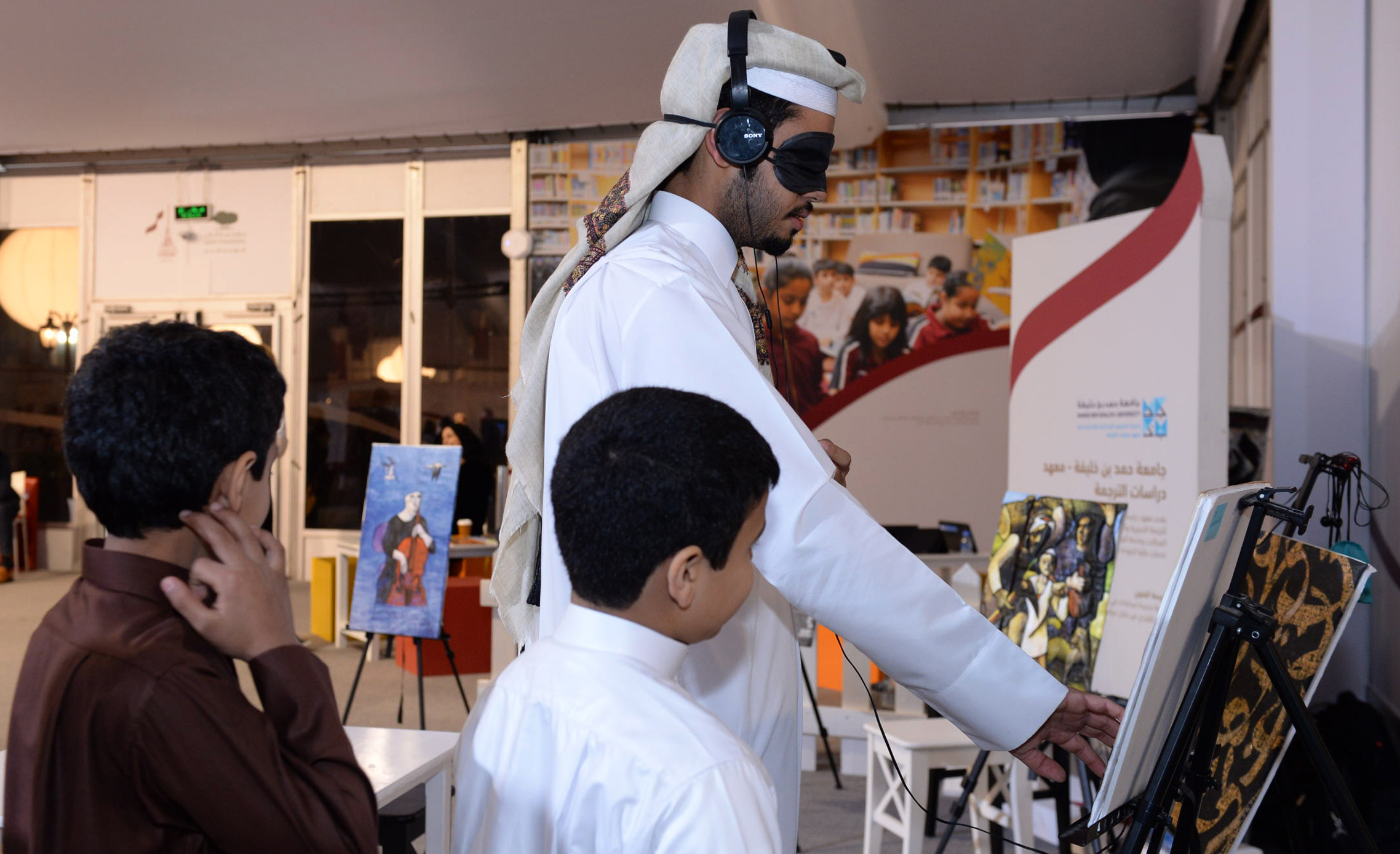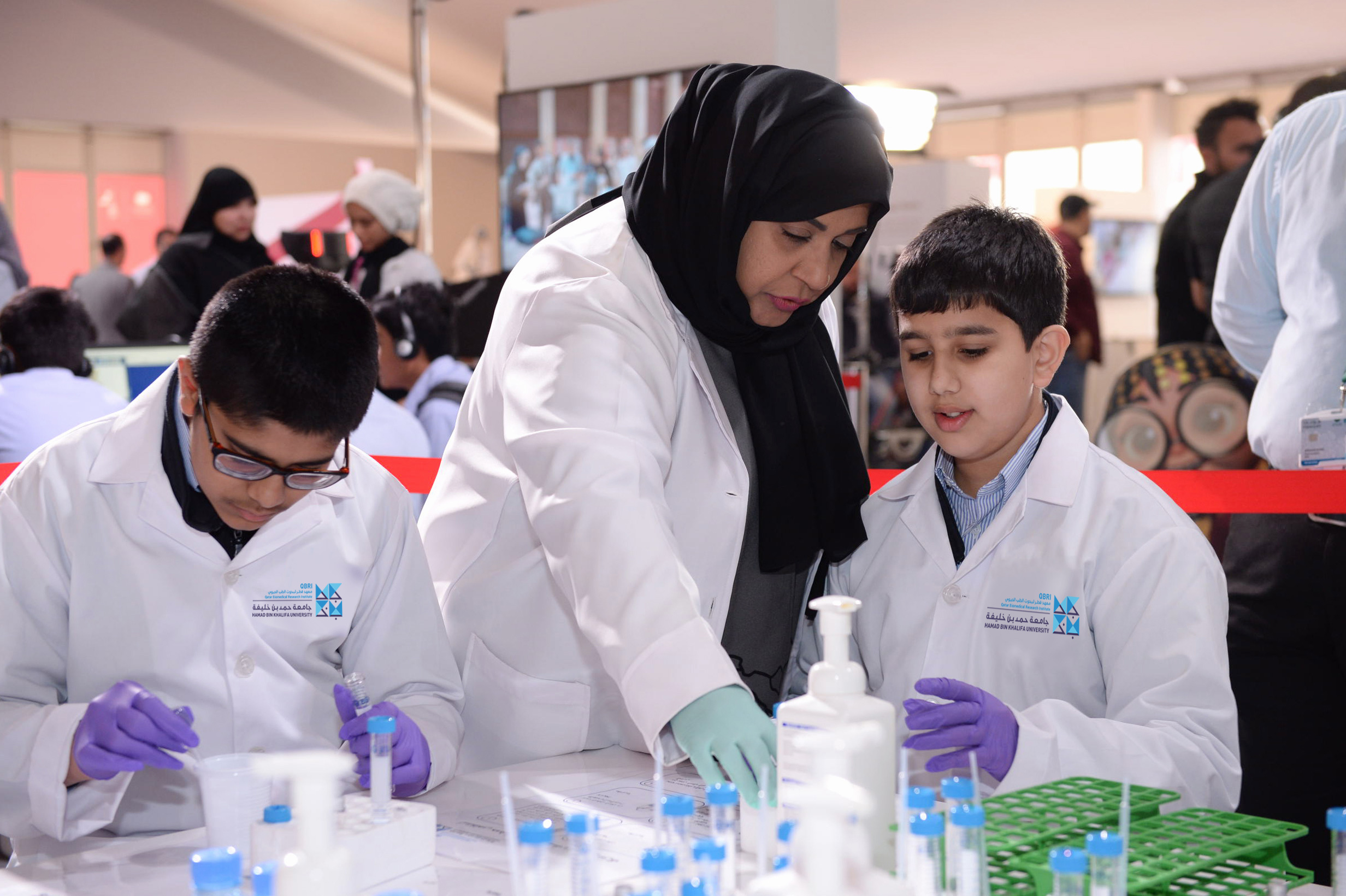Hamad Bin Khalifa University (HBKU), a member of Qatar Foundation, is welcoming Qatar’s youth at its stands and encouraging them to take part in activities and workshops designed to ignite their fascination for learning more about sciences and humanities. HBKU’s various colleges and research institutes have setup interactive displays that are scheduled to run until December 20 that the Qatar Foundation pavilion in support of Qatar National Day 2016 celebrations.

One popular activityat the pavilion this year is HBKU’s Qatar Computing Research Institute’s (QCRI) “Hour of Code” program; part of a wider campaign by the institute to introduce coding and computational thinking to school-age children. Dr. Eman Fituri, Director of Educational Initiatives at QCRI, noted: “The activities we have been presenting have provedvery popular among the children visiting the tent, especially for the primary and preparatory school students visiting Darb Al Saii.”
During theQatar Biomedical Research Institute’s (QBRI) workshop, visitors are being given the opportunity to enjoy hands-on experience working with human DNA. Much to their delight, participants have been able to work with QBRI scientists in a miniaturizedlab setting complete with professional equipment. Yasser Al-Sarraj, Senior Research Associate at QBRI, mentioned: “We want to use this opportunity to share with the younger generation experiences of exploring biomedicine, a field within the sciences that they might not have considered before. Our laboratory simulation experience is making science simple, easy, and funfor them to access.”
Qatar Environment and Energy Research Institute (QEERI) are represented at Darb Al Saii by an inflatable observatory that serves as a mini-planetarium, developed to help spread awareness of, and spark a new generation’s interest in, the breathtaking developments in the field of astronomy. Ahmed Mohamed, a research assistant at QEERI who is guiding visitors around the observatory, said: “There are three objectives we are targeting at this event. First is to highlight the presence of astronomers and observatories in Qatar,and to spread awareness about this field. The second is to showcase QEERI’s contributions to astronomy through the discovery of five new planets. Our final objective is to educate visitors about the rich Arab legacy in astronomy that led to the naming of many stars and galaxy clusters.”
Visitors to the pavilion also had a chance to experience a project developed by HBKU’s Translation and Interpreting Institute’s (TII) that enables the visually impaired to experience art. Researchers at TII, part of the College of Humanities and Social Sciences, are showcasing artwork withelevated relief features, allowing those with visual impairments to tangibly explore these works. This is accompanied by an audio description of each piece. Audiences are able to enjoy these works of art, and gain a greater understanding of the role translation plays in improving the quality of life for people with disabilities. Nada Al Mahmeed, Senior Project Leader at TII, said: “The activity has been a great success. It has attracted a lot of people,who have been fascinated by the unique experience of appreciating visual artworks in a non-visual way.”
Promoting texts that highlight Qatar’s rich biodiversity developed by local authors was HBKU Press. The exhibit features interactive screens, enabling younger audiences to engage with the material. Muneera Saad Al-Romaihi, Community Outreach Specialist at HBKU Press, noted:“As always, HBKU Press is proud to participate in National Day celebrations as we ourselves celebrate another year of helping to shape the Qatari literature landscape by giving a voice to Qatari talents in the region and beyond. Our participation in Darb Al Saii underscores our commitment to the local population by highlighting texts that focus specifically on Qatar’s biodiversity.”





